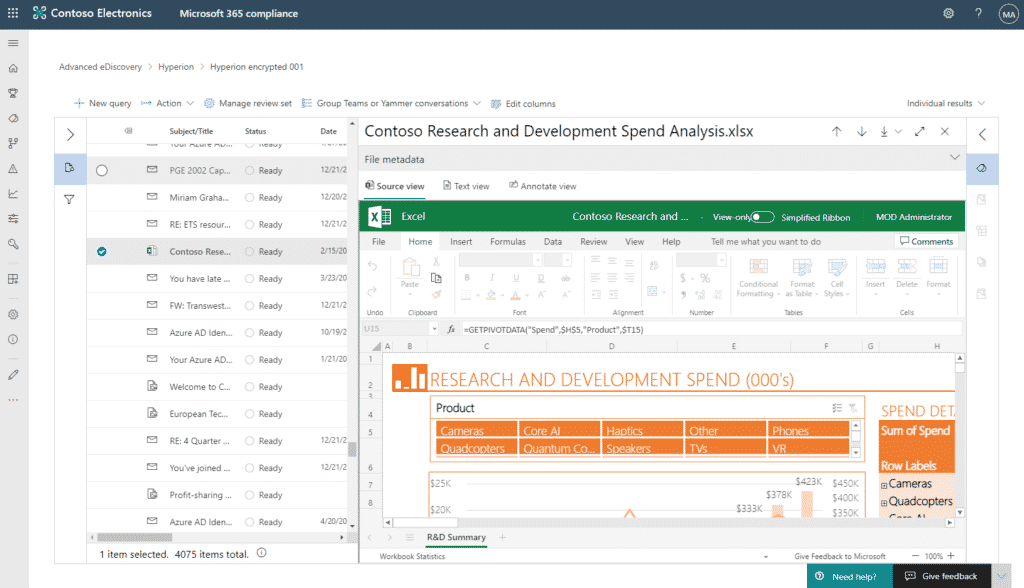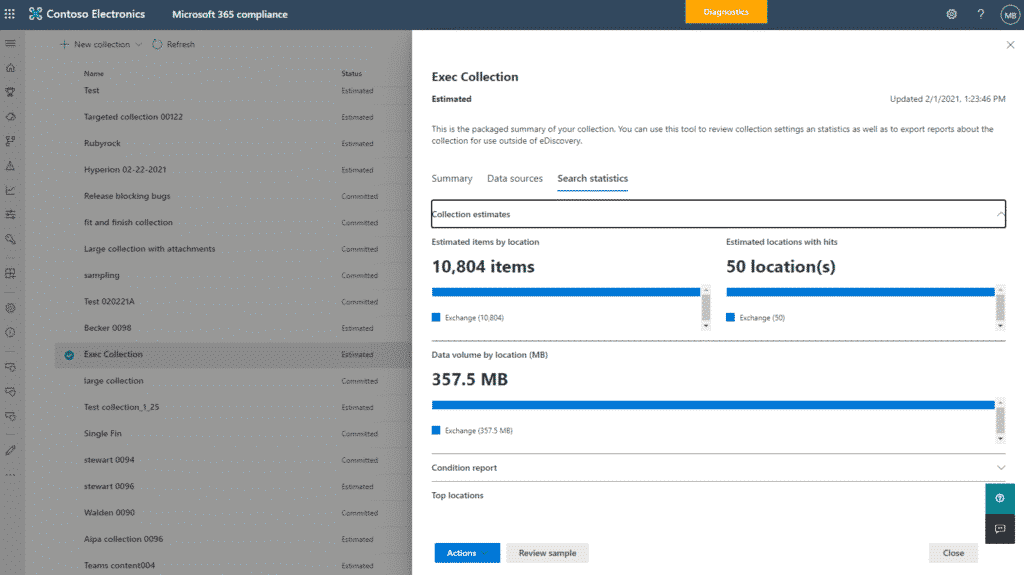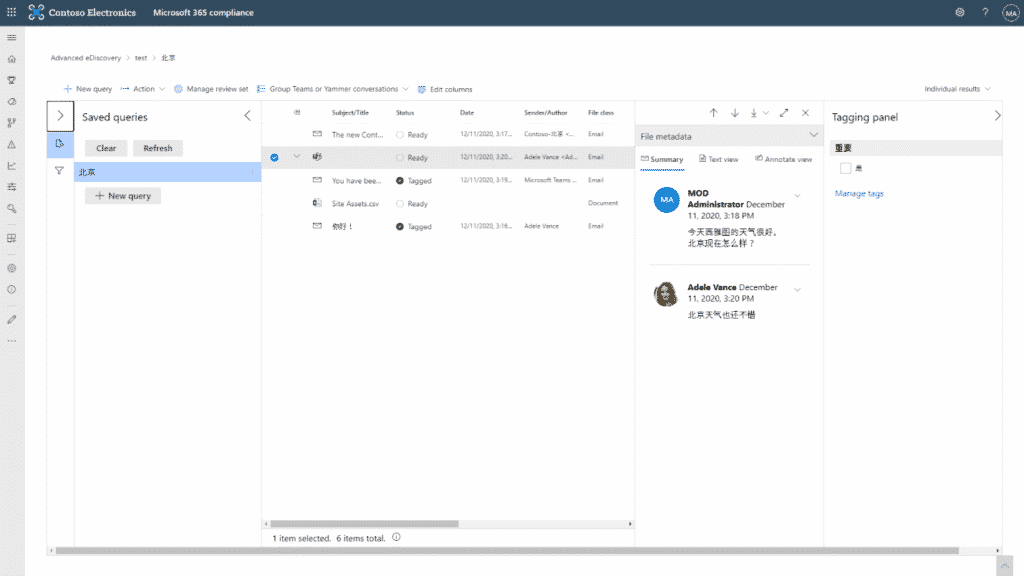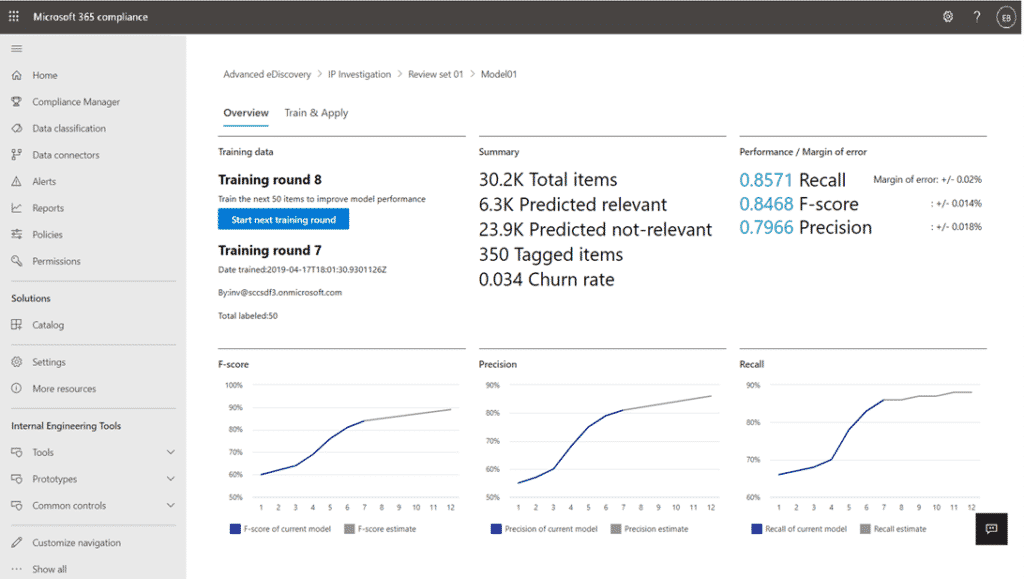- Reduce friction in discovering content relevant to legal matters
- Enhancing collections to reduce inefficiencies due to over-collection and over-preservation
- Supporting Chinese, Japanese, and Korean (CJK) languages during review and analysis
- New predictive coding module designed to lower friction to getting started
- Get Started
Legal departments are increasingly being called on to not only help navigate a broad range of issues but also to show organizational leadership and become strategic partners to the business. A recent study conducted by IDC¹ found that legal departments’ responsibilities have drastically expanded as data privacy and compliance increasingly fall within their purview. There’s real pressure to do more with less because organizations aren’t adding to headcount to manage new responsibilities. In fact, 42 percent of respondents stated that improved efficiency is the primary reason they adopted cloud-based legal technology.
Legal practitioners need modern, integrated tools to become more efficient and manage the increasingly complex compliance landscape. At Microsoft, we’re focused on bringing innovation to the legal technology space to help legal teams meet their growing responsibilities. Today we’re announcing several new capabilities to help legal departments find responsive content more efficiently with Advanced eDiscovery, including:
- Discovery of Microsoft Information Protection-encrypted content such as cloud attachments.
- New iterative collections experience.
- Enhanced support for Chinese, Japanese, and Korean languages.
- New predictive coding capabilities.
Reduce friction in discovering content relevant to legal matters #
Because digital data doubles every two years, it’s more critical than ever to have integrated tools that help reduce friction between protecting sensitive content at scale while permitting discovery on content relevant to legal matters.
Legal practitioners know encryption is critical to their information protection strategy; however, traditional solutions and processes for decrypting content creates several hurdles to the eDiscovery workflow. For example, when legal practitioners look to view content for closer review, it requires them to export the sensitive content, decrypt it either by obtaining the password from the person (the data custodian), gain special admin permissions, or apply decryption software. Following this, the decrypted data has to be re-ingested for processing and review. This is an inefficient multi-step process, and it can come with increased security and privacy risks.
To help reduce the friction of discovering sensitive content relevant to legal matters, Advanced eDiscovery seamlessly supports search and discovery of Microsoft encrypted content as part of your eDiscovery workflow. Additionally, to help legal practitioners to discover the new and modern ways users are collaborating on protected content, we are announcing that Advanced eDiscovery now also supports discovery of Microsoft encrypted cloud attachments. That means if a person (a data custodian) shared an encrypted cloud attachment stored in SharePoint and OneDrive, Advanced eDiscovery will automatically decrypt the attachment during the eDiscovery workflow. This enables legal practioners to view encrypted content seamlessly when previewing search results, reviewing for responsive content in the review set, and exporting that data decrypted for downstream processes—all without having to manually decrypt the data or bring it out of the Microsoft 365 security and compliance boundaries.
The ability to seamlessly discover encrypted content, combined with the recent announcement to discover cloud attachments, is a significant step towards helping organizations meet their eDiscovery obligations more efficiently, while also enabling their users to continue to be more productive.

This is now generally available, and you can learn more about Decryption in Microsoft 365 eDiscovery Tools here.
Enhancing collections to reduce inefficiencies due to over-collection and over-preservation #
Needle, meet haystack. Organizations often inefficiently over-collect and over-preserve content, increasing time and cost to process and review large volumes of data.
To empower organizations to find what they need faster, Advanced eDiscovery is enhancing the collection experience so legal teams can get a sense of the size and scope of an investigation by providing estimates, reporting, and a sampling of the results earlier, even as a draft collection.

The collections enhancements will be available in public preview in the coming weeks. In the meantime, learn more about how you can get started with data minimization earlier with this new collections enhancements here.
Supporting Chinese, Japanese, and Korean (CJK) languages during review and analysis #
Organizations are increasingly expanding their global footprint; however, cross-border litigation and disputes can be challenging.
To help organizations with these critical needs, we now support CJK languages in Advanced eDiscovery. With this update, organizations can now use CJK character set languages when querying, tagging, and analyzing data to help reduce and cull the data in-place. Additionally, legal practitioners don’t need to specify a document language in the review set query. Instead, Advanced eDiscovery automatically detects document languages. To continue to support organizations as they expand globally, we plan to add and support more languages. In the meantime, learn more about CJK language support for Advanced eDiscovery here.
New predictive coding module designed to lower friction to getting started #
Assisted review technologies can provide significant efficiencies and cost savings. Unfortunately, getting started in traditional solutions and processes can be challenging as organizations have to export large volumes of data to analyze in a separate system, then train or find subject matter experts to use the complex analytics tools—increasing cost, complexity, and risk.
To help cull and reduce data, right where Microsoft 365 data is created, shared, and stored, legal practitioners can use our new predictive coding module without moving data outside the Microsoft 365 security and compliance boundary. As part of this preview release, legal practitioners can organize content for review faster by going through training rounds of relevant and non-relevant content to iteratively train and tune the model performance by starting with as little as 50 items. This is an improvement from traditional models that require customers to train upwards of 10 times more documents to get started and see the output of the model.
For more information on the new predictive coding capabilities available in preview read here.
Get Started #
We are committed to helping organizations with their eDiscovery needs by continuing to deliver capabilities that make the end-to-end workflow more efficient. Organizations can test-drive these new features in Advanced eDiscovery today:
- Sign up for a Microsoft 365 E5 trial.
- Visit the Microsoft 365 compliance center to get started.
- Watch Ignite skilling videos to see Advanced eDiscovery in action.
- Let us know what you think of the features in preview.
¹IDC, 2020 U.S. Legal Technology Buyer Survey, Doc # US45856020, July 2020







